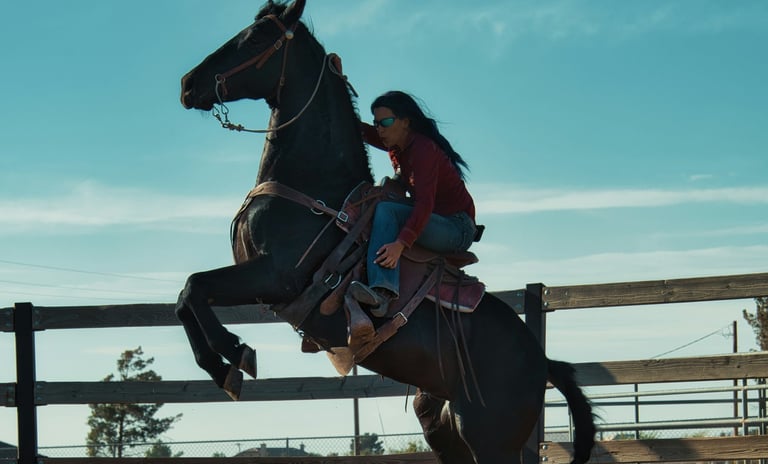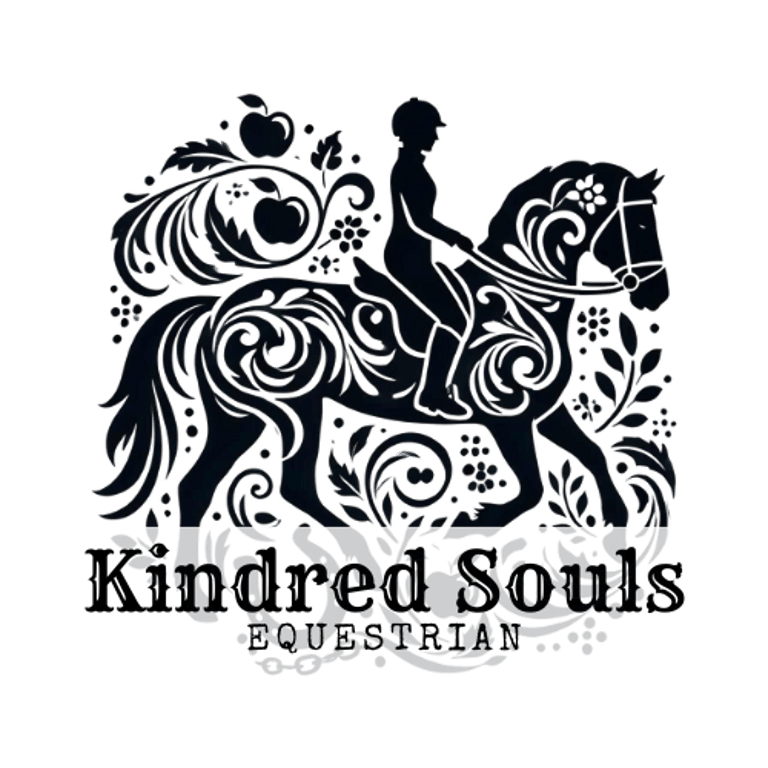Aversive Equine Emotions: Fear and Rage
What do these two equine emotions tell us about the horse?
Becki
6/10/20255 min read


Recently I was working with a horse that hadn't been handled in sometime. She is a sensitive and shy horse, hanging out in the middle of her herd and taking safety behind the bold horses who come out to say hi to visiting humans. With only a few days notice, she had a buyer and we had to pull her out for vetting and shipping. Many of you reading may be thinking the same thing my gut was telling me, that this wasn't going to turn out the way we planned it, and it didn't. I'm wasn't in complete control of the situation so I couldn't really control the timeline which was really unfortunate. A lot went on that day. Unfortunately some of the most profound lessons come from bad situations and making mistakes, and I learned quite a bit that day.
We had a plan. The horse had been on trazadone for three days. She was in a pen a little bigger than a round pen with a partner so she wouldn't be too worried. The vet was going to come sedate her so we would have an easier time loading her. We were hoping to have a stock trailer but instead we had a two horse straight load, but in the end that didn't really matter because she didn't get to the trailer at all.
When the vet arrived, she was in a bit of a hurry. It was a Sunday morning, and she had to get to a colic call. There was pressure to get the mare on the trailer as it was a 12 hour drive to her new home. We didn't have any room for the mare's agenda and in hindsight we were putting her in a very unfair situation. We did our best to set up as many allowances for her low handling as we could. Several other mares from this herd had been vetted and shipped out in a similar situation. They weren't pleased about the vetting and the trailering but they endured. So I was fairly comfortable with that and I let her buyers hold her for the vet. The mare was apprehensive, but not as anxious as some other horses I had vetted in this same scenario. That made what happened next all the more shocking.
As the vet placed the needle on the mare's neck, at the first prick of the needle she reared up on her hind legs and struck out at the vet at eye level with her front hoof. I saw the vet lean back in slow motion and just barely evade her hoof. It happened so fast and was shocked and mortified. Not only did we put the mare in a bad situation but we also endangered the vet. There was so much we did wrong here, but I was also surprised that such a shy horse who would fade away from human interaction would change so dramatically. She was not an aggressive horse in normal situations. I spent the rest of the day astounded at how quickly things had turned.
I found some answers in Connection Training: The Heart and Science of Positive Horse Training by Hannah Weston and Rachel Bedingfield (2019). The first chapter of this book covers equine emotions, setting the basis for using emotions to train horses in the best possible way. They go over Panksepps seven emotional brain systems, grouped into appetitive and aversive systems. Most of the book and connection training focuses on appetitive systems, and that is where we want to keep horses, especially when we are working with them! But the scenario we set up for that mare on the vetting day made it impossible for her to feel good.
What I witnessed was the in the spectrum of Fear and Rage. Weston and Bedingfield say "When a horse's Fear system is activated, he'll want to run away. If he's trapped or caught and can't escape, the Rage system will be activated and the horse will instead fight for freedom." This is what we commonly refer to as fight or flight. What struck me is that we often describe these two emotions as an either/or. That concept was what I expected that mare to do- to stay in flight and circle and try to run when the needle touched her neck as several other horses in the herd did. That was also why I was surprised to see her go from flight to fight so quickly. Hannah and Bedington describe these two emotions as more of a continuum in some contexts, which matched what I saw. An inability to flee led to a fight response. (I cannot help but wonder if she would have given more signs of her elevating emotional state before lashing out if she weren't on trazadone, but that's another question for another day.)
Hannah and Bedington continue: "The Rage system inhibits the Fear system, resulting in strength and determination that come from 'blind rage'. A common example is a horse who fights the vet or farrier when he is afraid and is not allowed to escape." The mare's fear of humans was inhibited when she switched from flight to fight. When the vet dodged her hoof and backed off, and the threat was reduced, the mare retreated back into her fear system and danced around, once again trying to escape. This revelation also explains why some horses that are not allowed to escape or overcome their fear through positive training can end up at auction, labeled dangerous, and found to be completely reasonable animals when a fear free training rescue rehabilitates them.
Had we taken the first step in creating a dangerous horse? If we continued to pressure her without finding ways to teach her the skills she needs to survive in the human world, we certainly would. The vet did give her an injection in the muscle. I led her towards the trailer but I was unwilling to push her as I had seen what might happen if I did. She was definitely on high alert and was just not willing to get all the way there. Her buyers didn't want to push it anymore than I did so we decided to try again another day. I resolved never to let that scenario happen with any horse I worked with ever again. I continue to work with this mare. She is still shy, reserved and determined to let her training happen on her schedule, but she's making progress and I am gaining her trust. And now, I am following her lead.
A quick post script - I called the vet the next day and apologized profusely. She and I talked about it and she is brave enough to continue to be our vet, for which I am eternally grateful. But I still feel deeply ashamed that she was in danger on our watch. We had let the horse down and the vet down. Of course their job has risks, but it's up to us to do everything we can to keep them safe with our horses. Fear free training can go a long way in making that happen.
Let's Talk
kindredsoulseq@gmail.com
(301) 887-3589
Copyright © 2025 Kindred Souls Equestrian - All Rights Reserved. Do not copy or reproduce without permission.
WEB DESIGN BY PAGES FOR MY PONIES
